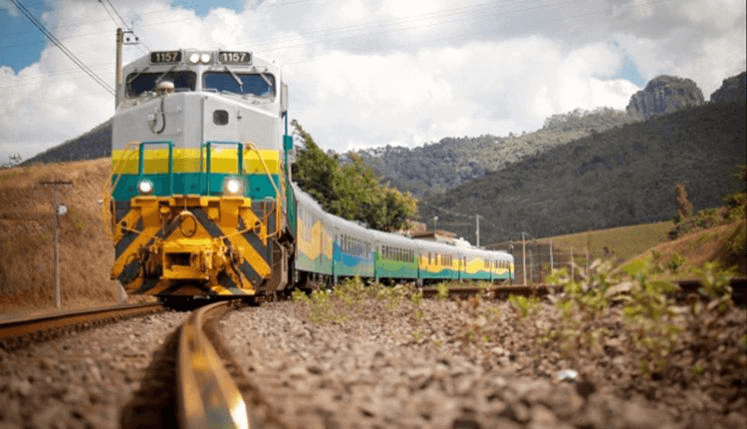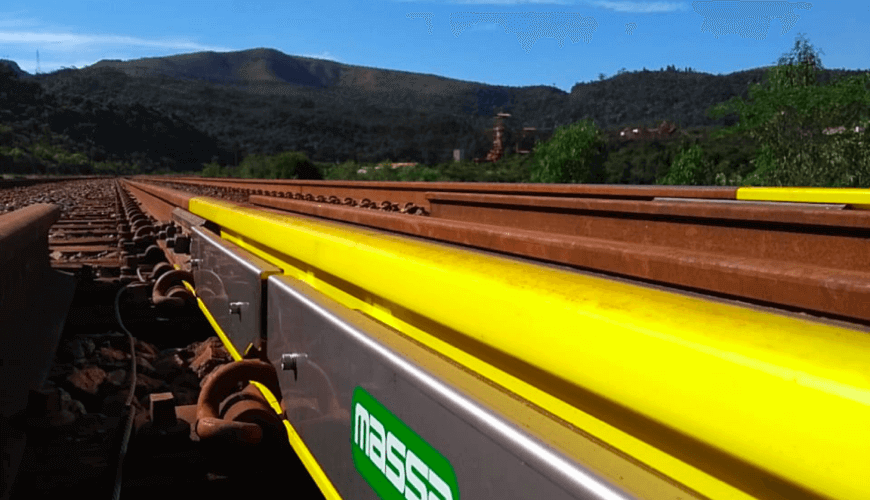
Carajás railroad: Understand everything about it
Since the construction of the first railroad in Brazil, still in the 18th century, the railroad sector has become one of the main modes of transporting cargo in the country. Throughout this period until today, the sector has undergone many transformations, advances and setbacks. It was once the investment priority transport segment and it has also gone through years of neglect. Anyway, a lot of things happened to the railroad sector until it became what it is today.
Throughout this process, many railroads have been implemented and others abandoned. Currently, Brazil has about 15 railroad lines, managed by different private logistics companies. Between the lines, there is the Carajás railroad or the Carajás railroad (EFC), which, when compared to the others, is not so large in extension, but it is extremely important.
The Carajás railroad was built after a long period of projections in the Carajás region, in the state of Pará. The construction of the railroad was mainly due to the creation of the Carajás Project, which was a government proposal to explore large spaces supplied by important ores in this region, encompassing several cities in northern states, such as Pará and Tocantins, and reaching the southeast region of Maranhão, in the northeast. As this was an important region for mining, the government saw the need to create a transport route for the extracted ores and that is where the construction of the EFC came from.
Even though the construction project for the Carajás railroad was completed and delivered in 1974, the railroad's operations began just nine years later, in 1985. Since then, it has been an important form of product outflow, mainly for the northern and southern regions. North East of the country. In addition, this is a railroad that also operates in the transport of passengers, having its route stipulated from the city of São Luiz, in Maranhão, to Parauapebas, in Pará.
Content Index
Current situation

Unlike many Brazilian railroads, which have experienced a long period of scarcity in investments, causing the trains of the tracks and structures, such as the tracks, to be abandoned or otherwise not to receive more modern applications, the Carajás railroad did not suffer from that kind of problem.
Much because of the importance of the region in which the railroad operates and the abundance of ores and the need to supply the port of Maranhão to export these products, the Carajás railroad has always received the necessary care to continue functioning. Precisely for this reason it is considered one of the most modern railroads, both in terms of cargo and passenger transport.
The road has an extension of 892 km, passing through the states of Pará and Maranhão and also has integration with other important railroad lines, such as the Norte Sul railroad. It is installed exactly where there is the largest mine in Brazil, in the region of Carajás, and is connected to the port of Maranhão, with iron ore being the main product transported on the railroad, in addition to manganese, copper, fuel and other products.
Railroad Administration
Carajás
The Carajás railroad has been managed, since 1997, by the company Vale, which at the time acquired the highway concession and maintains it to this day. In addition to this route, the company has two other lines managed directly by the company and two others managed by VLI Logística, a company formed by Vale's logistics sector in 2011 that currently maintains shares linked to the company.
One of these railroads, managed by VLI Logística, is the Ferrovia Norte Sul, Tramo Norte. The importance of the Carajás railroad increases even more for the company since it connects exactly with the North Section of the Norte Sul railroad, managed by a company in which Vale has a good percentage of shares. In this way, integration operations are facilitated and the logistics of processes become more practical, benefiting both railroads, cities and supplied ports.
Carajás railroad Numbers

According to the website of Vale itself, the administrator of the Carajás railroad, the line has one of the largest trains in the world, with 330 cars and 3.3 km long. All this size of the trains facilitates transport logistics, since it allows more loads to be transported in a single route.
Also, according to data provided by the company, it is estimated that 120 million tons of cargo are transported per year, with the ores being the main ones. In addition, 350 thousand people are handled annually by the route.
Regarding data on the number of wagons, VLI Logística informs on its platforms that Ferrovia Carajás has more than 15 thousand wagons and 254 locomotives operating constantly.
Railroad scales from MASSA

As the carajás railroad is full of modern elements, especially the trains and the track rails, it is essential that all transport processes are carried out correctly, according to the weights allowed on the line. As you can see in more detail in the following link, the types of rails are classified according to the weight of the rail bar per meter. This classification is very important to determine which weighing per wagon is allowed on that particular track.
The main way to weigh the wagons and the loads carried by these wagons is by weighing them with a railroad scale. On the Carajás railroad, MASSA has approximately 15 railroad scales with high technology applied,which allows the weighing of the wagons to be carried out accurately, ensuring that the freight trains do not exceed the permitted weighing.
Conclusion
As we noticed throughout the article, the Carajás railroad is a railroad line of paramount importance for the country's economy. Created to transport the ore mined in the Carajás region decades ago, the railroad remained present in the composition of Brazilian railroad lines and, to this day, stands out because of its efficiency, modern structures and trains, as well as the large quantity of cargo transported to the regions in which it operates, essential for supplying the Port of Itaqui, located in the State of Maranhão.
FONTES: https://www.antf.org.br/mapa-ferroviario/
https://www.antt.gov.br/vale-estrada-de-ferro-carajas
http://www.vale.com/brasil/PT/initiatives/innovation/carajas-railway/Paginas/default.aspx












